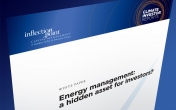Time to Tackle Rare Earth’s Toxic Underbelly
On April 2, 2015, the BBC ran an investigative report that illustrated rare earth mining’s trail of destruction. Whilst it was not the first time that the toxicity of rare earth mining had been the subject of scrutiny, the graphic portrayal of a man-made toxic lake on the outskirts of Baotou in Mongolia, should be a wake-up call for consumers of digital TVs, computers and smart phones, which are the major users of rare earth elements.
BBC’s piece was written by Tim Maughan, who had received support from Unknown Fields Division, an NGO that has a track record of going to the farthest flung regions of the world to uncover hidden secrets. It is estimated that Baotou is the centre of production of half of China’s rare earth elements, with one tonne of rare earth elements producing 2,000 tonnes of toxic waste.
Baotou’s toxic lake raises the important question; how is that such important commodities continue to be mined with such low environmental standards? Rare earth mining has long been dominated by China, which up until recently produced over 90 percent of global production. In a bid to control prices, China introduced export restrictions in 2009 — and banned exports altogether to Japan over a fishing dispute. Whilst the U.S. and Japan fought China in the World Trade Organisation, the price of rare earth elements soared, leading to both a demand and supply response.
Users of rare earths began searching for alternatives whilst new mines were established, including the Molycorp Inc mine in the United States, which received investment from Japan’s Sumitomo Corporation. The resulting collapse in rare earth prices has now led Molycorp Inc to file for bankruptcy, and is likely to result in continued domination of Chinese producers such Baotou Steel, which is believed to have capacity to supply half the global supply.
One of the fundamental problems with rare earth mining is that once the final rare earth elements are produced, there is no established mechanism for manufacturers of smart phones, computers or TVs to determine the environmental impact of the original mining and processing.
The good news is that there is a precedent which could be adopted to address this situation. Back in the late 1990s the gold mining industry had to deal with a similar issue. A common method of extracting gold is to use cyanide, which historically had been dumped into nearby waterways — with disastrous impacts on indigenous fishing communities. In 2000, under the auspices of the United Nations Environment Programme, a global meeting of miners and stakeholders was convened to develop a voluntary code for the gold mining industry. The International Cyanide Management Code has since become the global standard for the management and transportation of cyanide in gold mining. For producers of jewellery, or investors holding gold deposits, the Code provides assurance on the way gold was extracted. The Code has been supported by NGOs, miners and investors alike, who understand that it directly contributes to better social and environmental outcomes for local communities and reduces the risk of operation for miners.
We believe that it is time that a Rare Earths Management Code was developed. The ICT industry has some of the strongest global brands and we have been pleased to see the way that companies such as Apple and Dell have taken their product stewardship responsibilities seriously, including by offering consumers the ability to recycle their products responsibly. But the fact is, that no matter how hard these companies work to develop quality programs, they are not able to confirm to consumers whether the rare earth elements that are used in production come from suppliers with strong environmental standards, or from companies that are degrading their environment, such as the situation in Baotou.
Based on the success of the International Cyanide Management Code, we believe that the United Nations Principles for Responsible Investment together with the United Nation Environment Program have the capacity to drive change by jointly convening a global stakeholder dialogue, that would include representatives from rare earth miners, manufacturers, NGOs and investors, the purpose of which would be to begin the process develop a Rare Earths Code of Management.
Latest news
-
14 September 2016
-
31 August 2016
-
18 August 2016
-
30 May 2016



